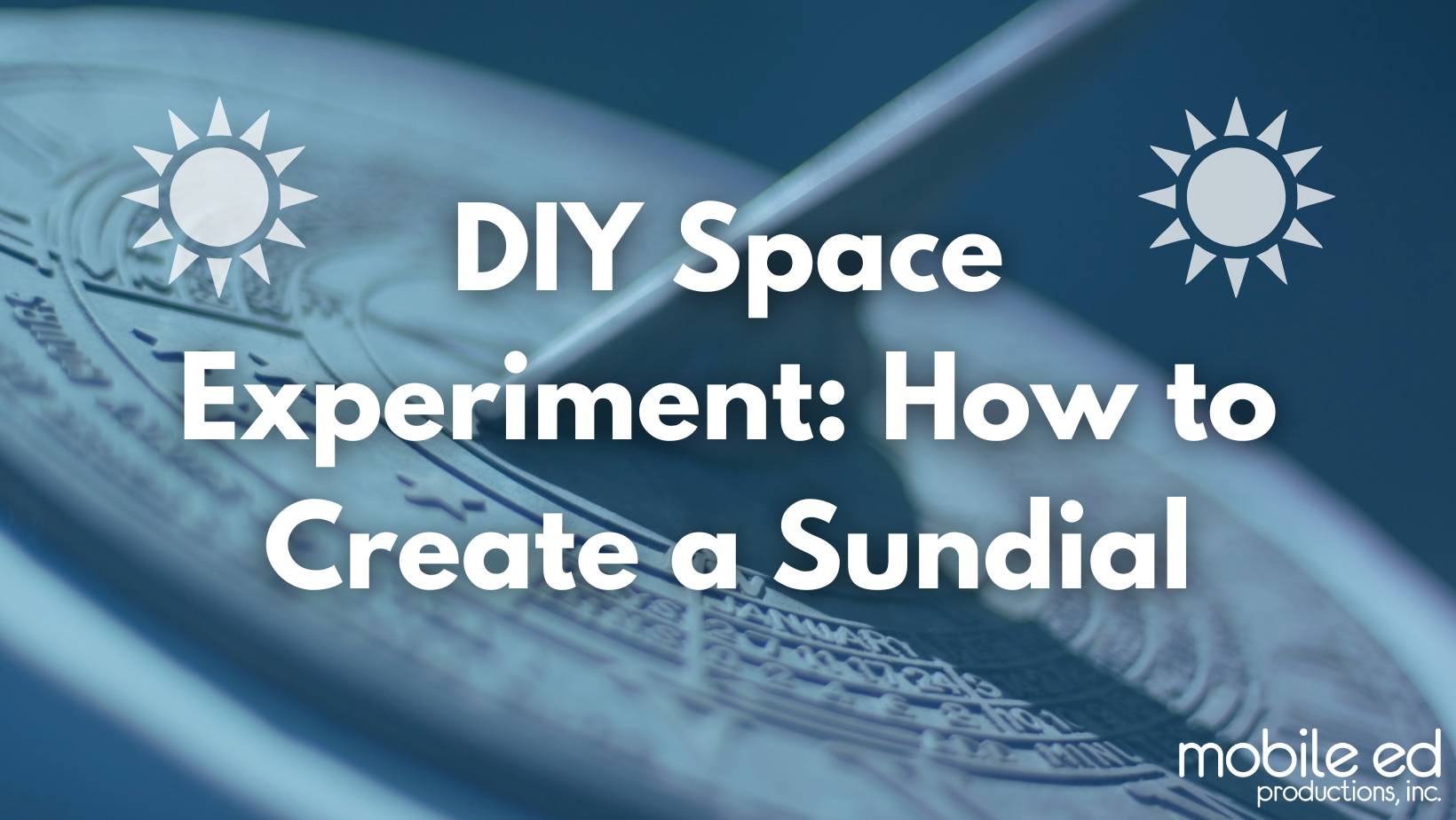
Learning about space is fascinating for so many, and we are certain your students will agree. Our educators that work with Mobile Ed Productions have used this quick-and-easy sundial project many times when teaching about the earth’s rotation in their classrooms.
Hands-on activities for young learners are extremely important because it encourages kinesthetic learning. Kinesthetic learning requires that students use their sense of touch to learn. Kinesthetic activities help students to practice trial and error, working as a team, and learning from their mistakes. Hands-on activities are often students’ most preferred learning method and provide a high level of engagement.
The sundial was the first form of timekeeping to exist in the world, originating around 3500 BCE. Using the sun’s position in the sky, the dial’s shadow indicates the time of day based on the sun’s position in the sky. Teaching students about the sundial will inform them of earth’s rotation on its axis and how our solar system works. Learning to make a sundial also meets Common Core Standards.
What You’ll Need:
- Sharp pencil
- Marker/Crayon
- Paper plate
- A sunny day
What To Do:
- Head outside around noon to begin your experiment.
- Poke your pencil through the center of the paper plate and pull it almost all the way through.
- Set the paper plate upside down so it is flat. The pencil should stick through the top.
- Mark the shadow of the pencil on the plate with the number “12”.
- Check the sundial throughout different times of the day and mark each one with the time. Each shadow will indicate a different position of the sun due to the tilt in the earth’s axis.
Additional options for you and your students include making a rock or chalk sundial.
One of our students, Nicky, used this blog post to create his own sundial with his Scout team to learn more about the earth’s rotation around the sun. Nicky, in his search to learn about sundials, acted like a true leader when he reached out to provide us with more tools to help you and your students learn about sundials. Nicky found The Parlor to have great information about the sundial. In the article Nicky found, you can find:
- Sundial experiments
- The history of the sundial
- Timekeeping facts
- Guides for telling time
We encourage you to check out this great resource! Nice work, Nicky. Thank you for helping our team!
Check out our SkyDome Planetarium Assembly to bring space to life for your students! You can learn more about why the SkyDome Planetarium is our most popular assembly in this blog post.






